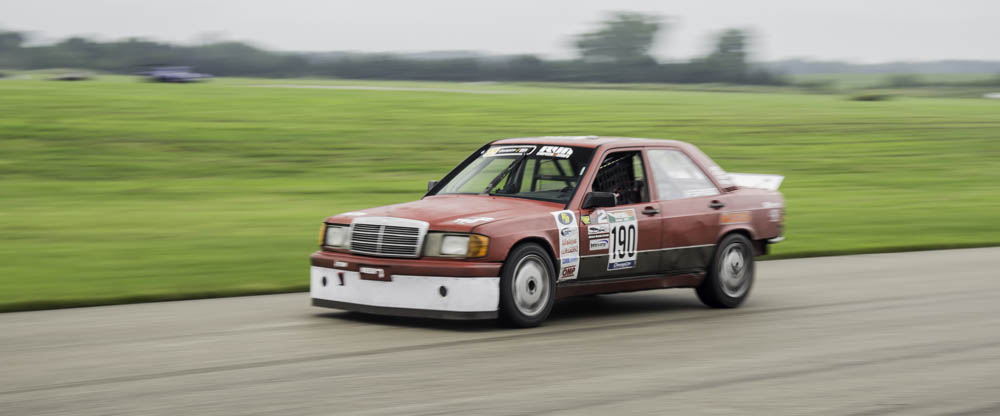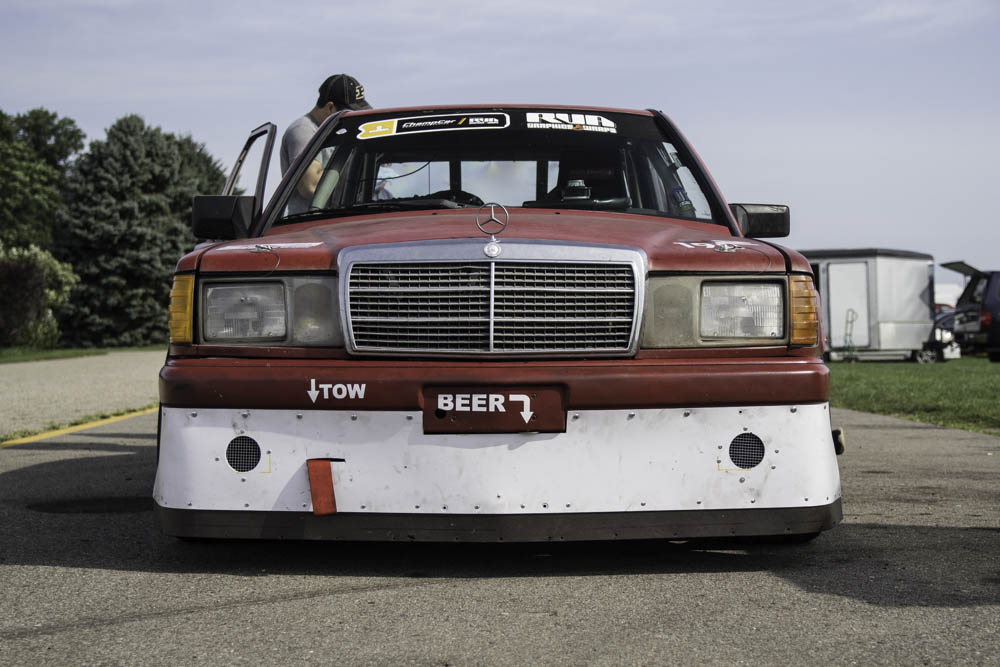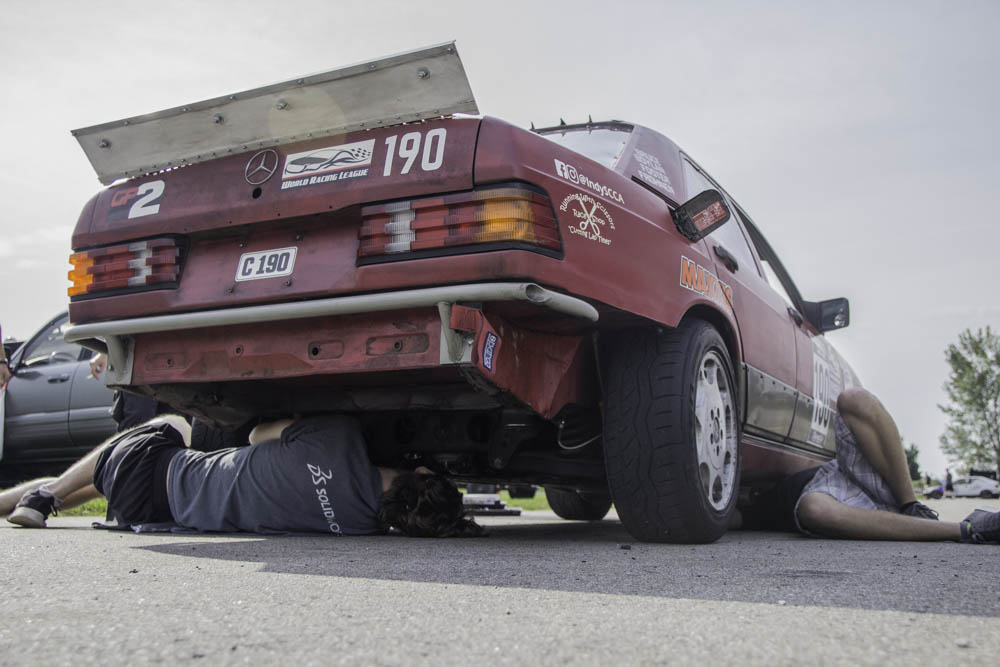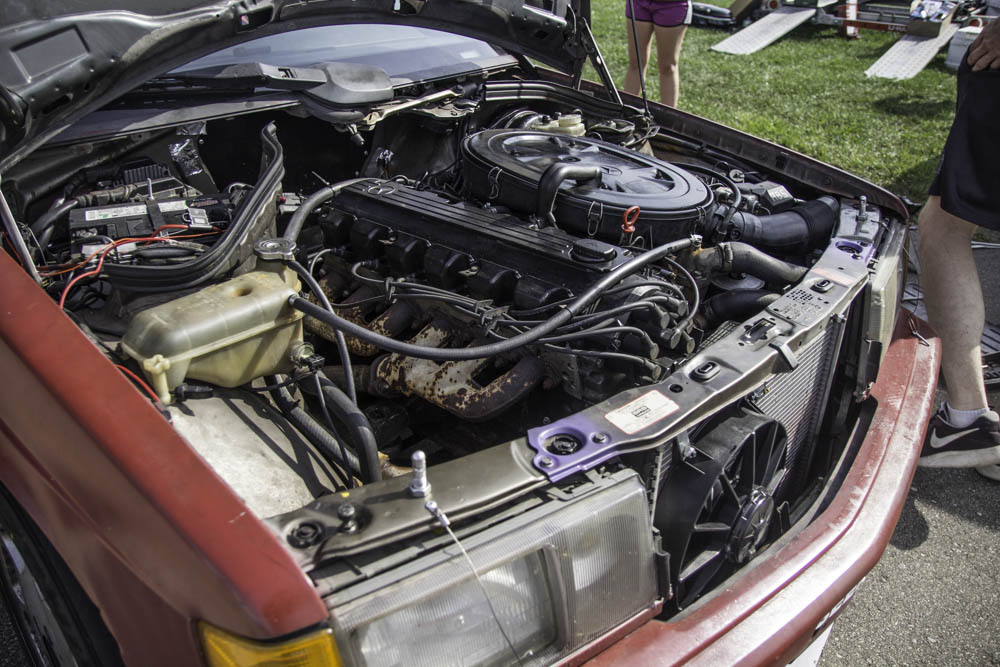MBWorld Tears Up the Track at the Endurance ChampCar Race

Portraying a Deutsche Tourenwagen Masters driver in a Mercedes-Benz 190 E is the best thing about experiencing Gingerman Raceway.
Based on the bright red paintwork and the fact I’m rounding corners with BMW E30s in front of (and behind) us, I can’t help but feel like I’m in the middle of a Deutsche Tourenwagen Masters (DTM) race. Of course, I’m in a Mercedes-Benz 190 E, but it’s a 2.6 and not a Cosworth, and the BMW’s offerings are no better than a lowly 325i. But this is a ChampCar race, and it is by far the most affordable and most exciting way to go endurance racing on a budget.
ChampCar Endurance Series started as a spin-off of other cheap-car endurance series, but evolved with an eye on genuine competition, rather than wildly-themed pageantry. As such, the cars entered are more serious about the business of speed. Cars are divided on classes based on factory performance, as well as modifications.
ChampCar Race on Tour
ChampCar runs at some of the most iconic tracks across America: Daytona, Sebring, Virginia International Raceway, Road America, and Watkins Glen, just to name a few. And all of them are a test of both the driver and the machine. Endurance races are anywhere from seven to 24 hours with ChampCar. However, this particular weekend, I’m at Gingerman Raceway in Michigan for an “8 + 7 hour” race weekend. Fifteen hours of racing are split between two days, all behind the wheel of this 190 E entered by the For the Sake of Racing team.

190 E Mods
Modifications to this car mainly consist of safety equipment, with a mandatory roll cage, racing harness, and racing seat. But other than that, everything else on the car was fairly standard, keeping a Mercedes-Benz OE (or “Original Equipment”) approach to reliability. Despite performance modifications being quite low, on-track performance is respectable. In the instance of this car, simplicity works in its favor. Where other teams were fixing issues that arose due to more powerful engine swaps and dramatic sheet metal changes.
Making the car run strong and reliable was essential. FCP Euro supplied a lot of the parts that would allow the engine to consistently click off lap times. Under the hood, the engine was refreshed with all new seals, along with new belts, a belt tensioner, and motor mounts. Car control was improved with lower control arm bushings, new ball joints, a full re-build kit for the rear suspension, and new wheel bearings. Those parts will essentially last the rest of the racecar’s life, since FCP Euro allows worn out parts to be sent back and exchanged for new parts, no questions asked.

Gingerman’s Deception
Gingerman on its own is fast and fun, and looks simple. But it is also deceptively complicated when driven at speed. Turns 1 and 2 alone are worth a few 10ths of a second when you get the line done correctly. However, on the back half of the course, turns 8 and 9 are where the most amount of time can be found with the correct line. Allowing the car’s own weight to transfer outward, and owing to the opening radius of the turn, only one steering input is really needed. But it will take you from the turn-in point in Turn 8 which you set up for on the right side of the track, back across the track to the left at Apex 9.
This allows you to flow to the right side again at Exit 9, and ultimately you aim directly at the turn-in point for 10, again set up from the left hand side. Those aren’t the only turns that can catch out a driver. Turn 3 is easy to over complicate and Turn 10 is one of those turns that falls away from you just as you enter it. At 2.1 miles and 11 turns, Gingerman Raceway is not the fastest course ChampCar runs at. However, in the 190 E, you’re only using second and third gear, even on the fastest straights.

The 190 E felt quite settled in the twisty back sections of the track, and if managed correctly, was stable in the slower, tighter sections as well. Gear shifts were as silky smooth, as was the sound and power of the M103 straight-6. Not without its quirks, the car would occasionally eject the shifter out of third gear on deceleration. However, simply holding the lever in place solved that simple issue. Speaking of slowing down, the brakes on this car were more than adequate, but not meant to be stomped on at full force. After all, the car needs to be fast for more than just a few laps.
continued…
